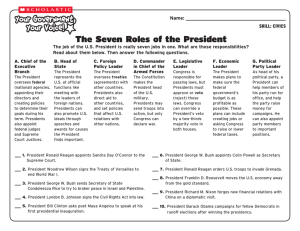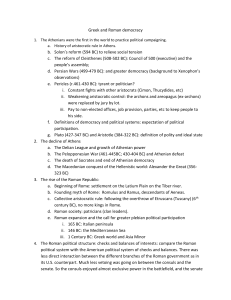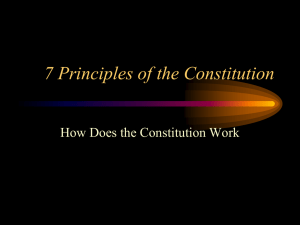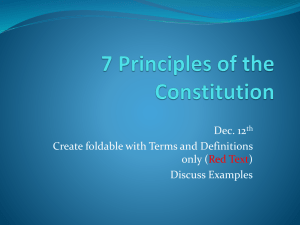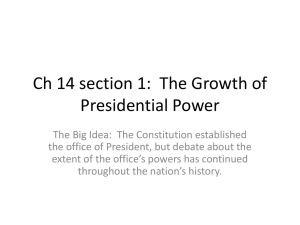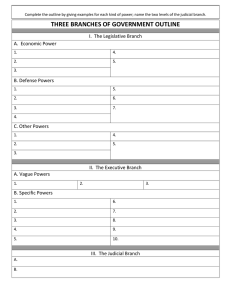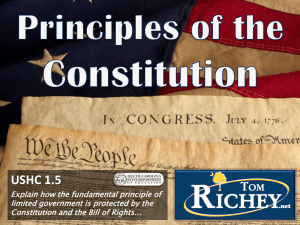Roman and U.S. Checks and Balance Chart
advertisement
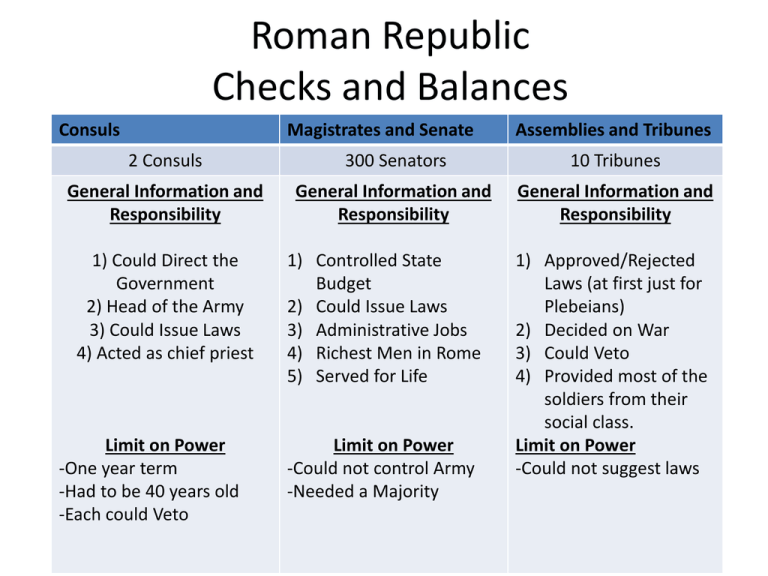
Roman Republic Checks and Balances Consuls Magistrates and Senate Assemblies and Tribunes 2 Consuls 300 Senators 10 Tribunes General Information and Responsibility General Information and Responsibility General Information and Responsibility 1) Could Direct the Government 2) Head of the Army 3) Could Issue Laws 4) Acted as chief priest Limit on Power -One year term -Had to be 40 years old -Each could Veto 1) Controlled State Budget 2) Could Issue Laws 3) Administrative Jobs 4) Richest Men in Rome 5) Served for Life Limit on Power -Could not control Army -Needed a Majority 1) Approved/Rejected Laws (at first just for Plebeians) 2) Decided on War 3) Could Veto 4) Provided most of the soldiers from their social class. Limit on Power -Could not suggest laws U.S. Governing System Checks and Balances Executive Branch (President) Legislative Branch (Congress) Judicial Branch (Supreme Court) 4 Year Term (Elected) Requirements U.S. Born 35 Years of Age or Older 14 Years a Resident 2 and 6 Year Terms (Elected) Requirements House of Representatives 25 years old, resident of that state, and 7 Years as a citizen Senate 30 years old, resident of that state, and 9 Years as a citizen House of Representatives Powers Make Laws, Collect/Levy Taxes, Regulate Trade, Declare War For Life (Appointed) Requirements None Powers Commander in Chief Recommend Legislation Appoint Judges Appoint Ambassadors Make Treaties Powers Resolve disputes between states Determine Federal Laws Uphold the Constitution Hear court cases that have been appealed at the highest level

